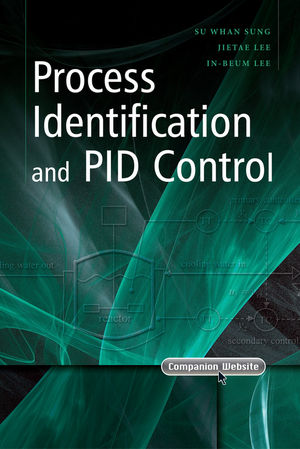Process Identification and PID ControlISBN: 978-0-470-82410-8
Hardcover
352 pages
April 2009, Wiley-IEEE Press
 This is a Print-on-Demand title. It will be printed specifically to fill your order. Please allow an additional 10-15 days delivery time. The book is not returnable.
|
||||||
Part One Basics of Process Dynamics.
1 Mathematical Representations of Linear Processes.
1.1 Introduction to Process Control and Identification.
1.2 Properties of Linear Processes.
1.3 Laplace Transform.
1.4 Transfer Function and State-Space Systems.
Problems.
2 Simulations.
2.1 Simulating Processes Composed of Differential Equations.
2.2 Simulating Processes Including Time Delay.
2.3 Simulating Closed-Loop Control Systems.
2.4 Useful Numerical Analysis Methods.
Problems.
3 Dynamic Behavior of Linear Processes.
3.1 Low-Order Plus Time-Delay Processes.
3.2 Process Reaction Curve Method.
3.3 Poles and Zeroes.
3.4 Block Diagram.
3.5 Frequency Responses.
Problems.
Part Two Process Control.
4 Proportional–Integral–Derivative Control.
4.1 Structure of Proportional–Integral–Derivative Controllers and Implementation in Computers/Microprocessors.
4.2 Roles of Three Parts of Proportional–Integral–Derivative Controllers.
4.3 Integral Windup.
4.4 Commercial Proportional–Integral–Derivative Controllers.
Problems.
5 Proportional–Integral–Derivative Controller Tuning.
5.1 Trial-and-Error Tuning.
5.2 Simple Process Identification Methods.
5.3 Ziegler–Nichols Tuning Rule.
5.4 Internal Model Control Tuning Rule.
5.5 Integral of the Time-Weighted Absolute Value of the Error Tunning Rule for a First-Order Plus Time-Delay Model (ITAE-1).
5.6 Integral of the Time-Weighted Absolute Value of the Error Tunning Rule for a Second-Order Plus Time-Delay Model (ITAE-2).
5.7 Optimal Gain Margin Tuning Rule for an Unstable Second-Order Plus Time-Delay Model (OGM-unstable).
5.8 Model Reduction Method for Proportional–Integral–Derivative Controller Tuning.
5.9 Consideration of Modeling Errors.
5.10 Concluding Remarks.
Problems.
6 Dynamic Behavior of Closed-Loop Control Systems.
6.1 Closed-Loop Transfer Function and Characteristic Equation.
6.2 Bode Stability Criterion.
6.3 Nyquist Stability Criterion.
6.4 Gain Margin and Phase Margin.
Problems.
7 Enhanced Control Strategies.
7.1 Cascade Control.
7.2 Time-Delay Compensators.
7.3 Gain Scheduling.
7.4 Proportional–Integral–Derivative Control using Internal Feedback Loop.
Problems.
Part Three Process Identification.
8 Process Identification Methods for Frequency Response Models.
8.1 Fourier Series.
8.2 Frequency Response Analysis and Autotuning.
8.3 Describing Function Analysis.
8.4 Fourier Analysis.
8.5 Modified Fourier Transform.
8.6 Frequency Response Analysis with Integrals.
Problems.
9 Process Identification Methods for Continuous-Time Differential Equation Models.
9.1 Identification Methods Using Integral Transforms.
9.2 Prediction Error Identification Method.
Problems.
10 Process Identification Methods for Discrete-Time Difference Equation Models.
10.1 Prediction Model: Autoregressive Exogenous Input Model and Output Error Model.
10.2 Prediction Error Identification Method for the Autoregressive Exogenous Input Model.
10.3 Prediction Error Identification Method for the Output Error Model.
10.4 Concluding Remarks.
Problems.
11 Model Conversion from Discrete-Time to Continuous-Time Linear Models.
11.1 Transfer Function of Discrete-Time Processes.
11.2 Frequency Responses of Discrete-Time Processes and Model Conversion.
Problems.
Part Four Process Activation.
12 Relay Feedback Methods.
12.1 Conventional Relay Feedback Methods.
12.2 Relay Feedback Method to Reject Static Disturbances.
12.3 Relay Feedback Method under Nonlinearity and Static Disturbances.
12.4 Relay Feedback Method for a Large Range of Operation.
Problems.
13 Modifications of Relay Feedback Methods.
13.1 Process Activation Method Using Pulse Signals.
13.2 Process Activation Method Using Sine Signals.
Problems.
Appendix Use of Virtual Control System.
A.1 Setup of the Virtual Control System.
A.2 Examples.
Index.



